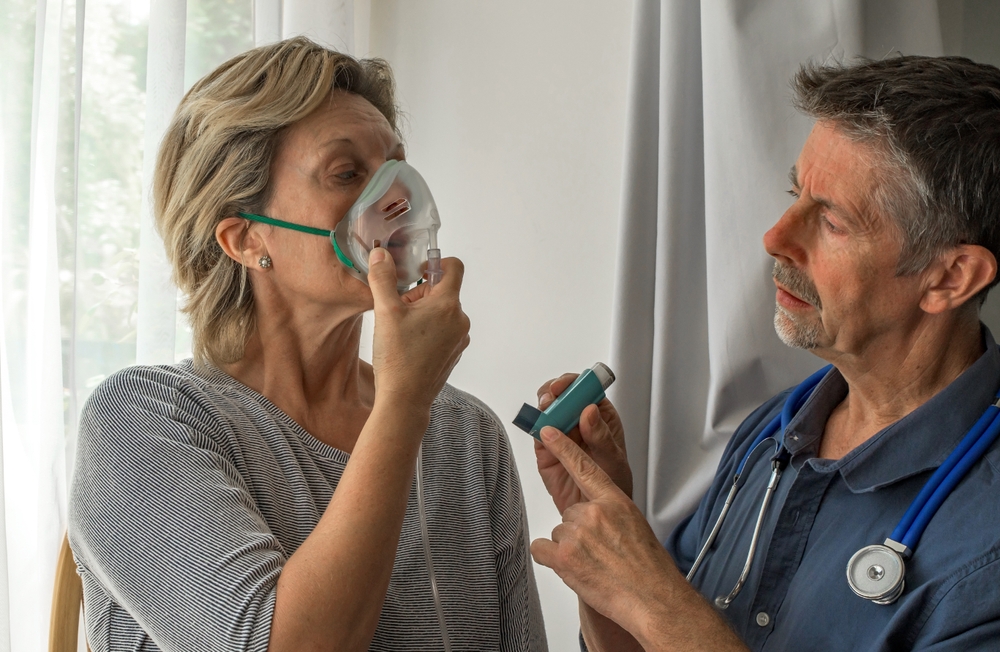Chronic Obstructive Pulmonary Disease (COPD): Causes, Symptoms, and Treatment
Causes of COPD

he primary cause of COPD is smoking. Around 85–90% of all COPD cases are linked to tobacco smoke, including cigarette, cigar, and pipe smoking. Even passive or secondhand smoke can contribute to lung damage over time. However, smoking is not the only cause. Long-term exposure to air pollution, chemical fumes, dust, and industrial smoke can also lead to the development of COPD. People working in construction, mining, factories, and agriculture are often at higher risk due to regular exposure to harmful particles in the air
With over 10 years of medical experience, including 6+ years specializing in Pulmonology, I have witnessed firsthand how various factors contribute to the development of COPD and how early detection and preventive care can make a significant difference in patient outcomes.
Symptoms of COPD
The symptoms of COPD often develop slowly and may not be noticeable at first. In the early stages, people may simply feel short of breath when climbing stairs or exercising. Over time, symptoms worsen and become more persistent. One of the most common symptoms is shortness of breath, which tends to increase with physical activity. Another key symptom is a chronic cough, often with mucus (phlegm), sometimes referred to as a “smoker’s cough.” This cough may occur throughout the day and may become severe.
Other symptoms include wheezing (a high-pitched whistling sound while breathing), tightness in the chest, and frequent respiratory infections, such as colds or the flu. As the disease progresses, patients often feel extreme fatigue, and in advanced cases, they may experience weight loss, swollen ankles, and cyanosis (a bluish tint to the lips or fingernails), indicating low oxygen levels in the blood. The symptoms can flare up suddenly in a condition called a COPD exacerbation, which may require hospitalization if not treated in time.
Diagnosis of COPD
Early diagnosis is very important in managing COPD effectively. A doctor will typically begin with a detailed medical history, asking about smoking habits, exposure to pollutants, and any history of breathing problems. The most common test for diagnosing COPD is spirometry, a simple breathing test that measures how much air a person can inhale and exhale and how quickly they can do it. Other diagnostic tools include chest X-rays, CT scans, and arterial blood gas tests, which measure the oxygen and carbon dioxide levels in the blood.
Treatment Options for COPD
While there is no cure for COPD, the disease can be managed effectively with the right treatment plan. The first and most important step is to quit smoking. Stopping smoking can slow the progression of COPD and greatly improve the quality of life. Doctors may prescribe bronchodilators, which are medications that help relax the muscles around the airways, making it easier to breathe. These are usually taken through an inhaler. In some cases, inhaled corticosteroids are used to reduce inflammation in the airways.
For those with more severe COPD, combination inhalers that include both bronchodilators and steroids are often recommended. Oxygen therapy may also be needed for patients with low blood oxygen levels. This can be done at home using a portable oxygen tank. Another key treatment is pulmonary rehabilitation, a comprehensive program that includes exercise training, nutritional advice, breathing techniques, and psychological support to help patients manage their condition and stay active.
In very advanced cases, surgical options may be considered. These include lung volume reduction surgery, where damaged parts of the lungs are removed to improve breathing efficiency, or a lung transplant for younger patients with end-stage COPD and no other treatment options.
Prevention and Lifestyle Management
Preventing COPD is mainly about avoiding risk factors. Not smoking or quitting smoking is the most effective way to prevent COPD. Avoiding exposure to harmful pollutants, dust, and chemicals—especially at the workplace—is also important. Using protective masks and following safety regulations can help reduce risk. Regular vaccinations, such as the flu shot and pneumonia vaccine, are essential to protect against respiratory infections that can worsen COPD.
Living a healthy lifestyle can significantly improve outcomes. This includes eating a balanced diet, engaging in regular physical activity, and managing stress. People with COPD should also avoid extreme temperatures, allergens, and crowded places during flu season to reduce the chances of an infection.
Conclusion
COPD is a chronic lung condition that affects millions of people worldwide. Although it cannot be cured, early detection, quitting smoking, and a proper treatment plan can help manage symptoms, slow disease progression, and improve overall quality of life. Awareness, prevention, and consistent care are the keys to living well with COPD. If you or someone you know experiences symptoms like chronic cough or shortness of breath, it’s important to seek medical advice early for proper diagnosis and care.